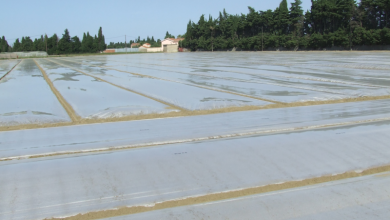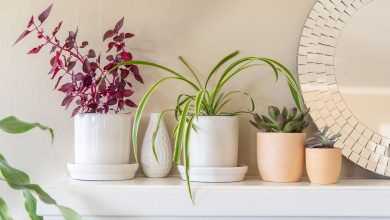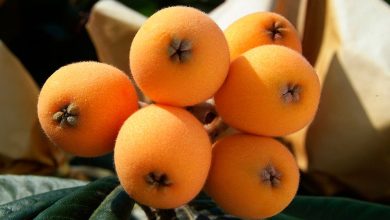Cinta Plant: [Cultivation, Irrigation, Associations, Pests and Diseases]
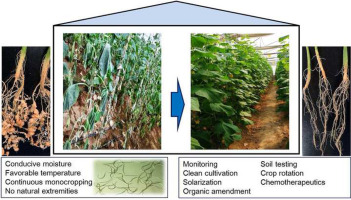
Important points when planting Cinta Plant
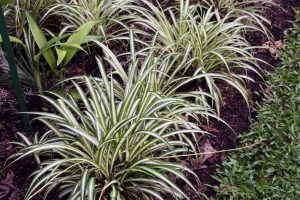 Where to sow? In full light. It needs a lot of sunlight, without sunstroke.
Where to sow? In full light. It needs a lot of sunlight, without sunstroke.- When? In spring -summer.
- How do we prepare the land? removed. With light substrate based on peat and vermiculite.
- How do we water? With drip.
- How often do we water? In summer, 2 times a week. Every 10 days in winter, rest of the year more spaced irrigations.
- Plagues and diseases? Mealybugs, aphids and mites. Diseases due to lack of light, excess water or nutrients, lack of nitrogen and iron.
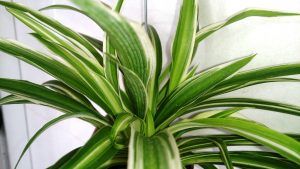 The ribbon plant is an evergreen herbaceous, highly valued for its beautiful leaves that resemble hanging ribbons, with the scientific name of Chlorophytum, and is native to southern Africa.
The ribbon plant is an evergreen herbaceous, highly valued for its beautiful leaves that resemble hanging ribbons, with the scientific name of Chlorophytum, and is native to southern Africa.
Better known as the ribbon plant, lazo de amor or mala madre, it has a beautiful shape given by the rosettes that develop through long and fleshy stems.
The tufts of its leaves are very decorative and used to multiply its species. Generally, the tape plant is used in suspended baskets to take advantage of its beauty.
The flowers of the ribbon plant are white, small with six very conspicuous stamens, and last only about 24 hours.
When to sow the tape plant?
The tape plant reproduces by dividing the plant or by planting the flower stems placed to take root in the ground, trying to do it in spring or summer, since they germinate much better.
Where to do it?
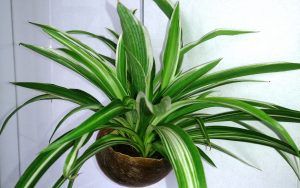 The Cinta plant requires a location with a lot of light and full sun for its cultivation, but it must be protected from sunstroke during periods of intense summer heat.
The Cinta plant requires a location with a lot of light and full sun for its cultivation, but it must be protected from sunstroke during periods of intense summer heat.
During the winter, the Cinta plant must be protected from low temperatures and they do not support temperatures below 14º C, but in spring-summer they easily resist 26º C, without direct sunlight.
The lack of light affects the beauty and density of the leaves of the Cinta plant, causing them to grow too thin and without their characteristic variegation.
How to prepare the land?
 The preparation of the land for the cultivation of the Cinta plant requires any gardening or nursery substrate that will be sufficient to stimulate a good root development of the plant.
The preparation of the land for the cultivation of the Cinta plant requires any gardening or nursery substrate that will be sufficient to stimulate a good root development of the plant.
It is recommended to try not to use cheap substrates that contain a large amount of salt and have an inconvenient behavior when it comes to draining water from the ribbon plant.
The substrate for the Cinta plant must contain a good type of drainage since the flooding of the earth would produce an uncontrollable rot on the plant in a matter of days.
After many experiments, science has invented chemical powders and fertilizers that tone the soil for the cultivation of the ribbon plant that can help its health and beauty.
If the soil does not provide what the plants require then they cannot grow, multiply or flourish healthy and beautiful as in the case of the ribbon plant.
How do we water the ribbon plant?
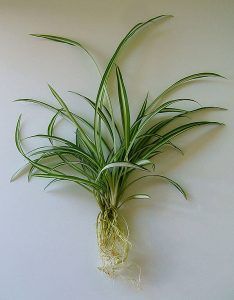 During the spring-summer period, the Cinta plant can be watered twice a week and every 10 days in winter, the rest of the year more spaced, but maintaining humidity.
During the spring-summer period, the Cinta plant can be watered twice a week and every 10 days in winter, the rest of the year more spaced, but maintaining humidity.
Although it requires a lot of water, it benefits from periodic misting of the leaves with water at room temperature.
The Cinta plant requires that the soil always remain moist, but taking care not to cause waterlogging since the elongated and thickened roots serve to assimilate water, so watering should be moderate.
Gardeners and horticulturists recommend «Do not water» the tape plant until the substrate dries and place it in a bright environment to facilitate the evaporation of excess water.
How do we sow a tape plant step by step?
The Cinta plant is considered one of the easiest herbaceous plants to reproduce and grow. It multiplies naturally with the production of daughter plants.
For the sowing and multiplication of the ribbon plant, the division of seedlings is recommended since it is considered to be one of the easiest techniques to carry out.
- Remove the little children that the plant is developing, and that grow close to the stem of the mother plant.
- Carefully separate these seedlings and transplant them into a new pot,
- Prepare a mixture of peat and vermiculite.
- Sow the seedling and water without flooding.
- Locate the plant in a place with lots of light but without excess direct sun.
The Cinta plant is continually in the process of reproduction since new shoots with white stems and elongated appearance will sprout. From the same plant you can get many more.
What favorable associations does it have?
The association of crops of compatible plants produces benefits with respect to their cultivation separately, in addition to the use of light, water and/or nutrients.
Favorable associations of the ribbon plant with other species are not known, however, this selection will correspond to gardeners and specialists in the area in order to obtain better results or compositions.
What pests and diseases attack the tape plant?
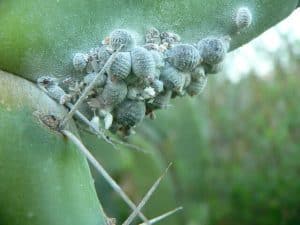 The tape plant is considered a species resistant to pests, but it can be attacked by mealybugs or aphids that appear at the base of the leaves or undersides. You can do a manual treatment or with insecticides.
The tape plant is considered a species resistant to pests, but it can be attacked by mealybugs or aphids that appear at the base of the leaves or undersides. You can do a manual treatment or with insecticides.
The diseases that the Cinta plant can present are caused by different circumstances such as excess water, lack of light, lack of nitrogen, iron, etc.
A very clear symptom of excess water in the tape plant occurs when its leaves become flaccid, fall and lack tension or a crisp appearance.
Another element that can indicate the presence of problems with the Cinta plant is the presence of two types of brown or dry tips, one associated with a lack of water and/or excess salts and the other with too much water in the substrate.
Also the absence of light makes the leaves of the ribbon plant turn yellow or lose their greenness. In this case, it is recommended to change the location of the tape plant and locate it in brighter environments, even with sun exposure.
Iron deficiency also affects the Cinta plant and can be seen in the yellow color of the young leaves, with pronounced nerves and a green color, for which it is necessary to apply an iron chelate-based corrector.
If the ribbon plant is in a very bright location and has slow growth and small leaves, it may be due to a lack of nitrogen. For this, the use of a fertilizer rich in this nutrient added to the irrigation is recommended.
Bibliography and references
- Encyclopedia My first knowledge about Plants, Snakes and Conservation. (1961). Spanish edition by Dr. Frank Thompson. Grolier Publisher Incorporated New York. Printed in Mexico.
digital database
- Elicriso.it. How to grow Chlorophytum. Reproduced from: https://www.elicriso.it/es/como_cultivar/chlorophytum/
- Beforeeverythingwasfield.net. How to grow ribbon plant or mala madre. Reproduced from: https://www.antestodoestoeracampo.net/cultivo-de-cinta-o-malamadre/
- tropical nature.com. Chlorophytum Ribbon Plant Care Manual. Reproduced from: https://naturalezatropical.com/ cares -cintas-chlorophytum-comosum/
- Laguiaverde.com. Chlorophytum. Reproduced from: https://www.guiaverde.com/guia-de-plantas/chlorophytum-comosum-variegatum-1822/

![Photo of Prune Bougainvillea: [Importance, Time, Considerations and Steps]](https://www.complete-gardening.com/wp-content/uploads/2022/08/prune-bougainvillea-importance-time-considerations-and-steps-390x220.png)
